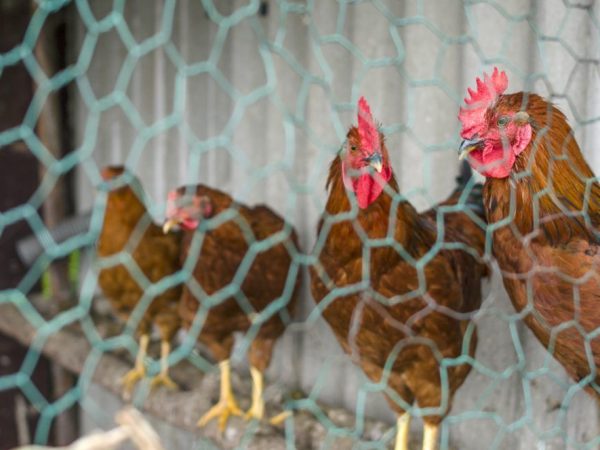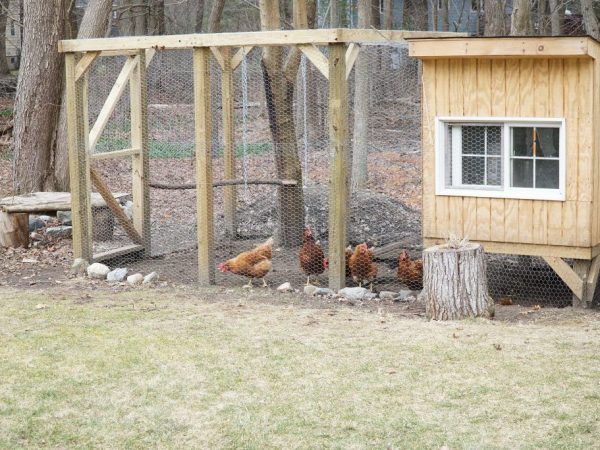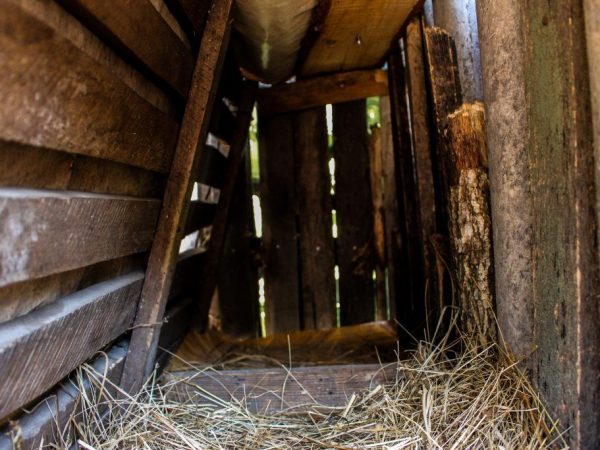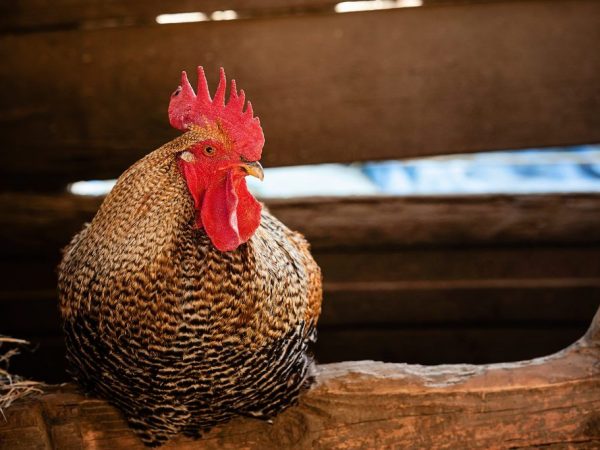Mini chicken coop device
Today, many different grocery products are presented on the shelves of shops, whatever your heart desires, but their quality leaves much to be desired. Store-bought chicken eggs also do not have good taste, so many people think about raising chickens in the country, for which it is necessary, first of all, to build housing for birds.

DIY mini chicken coop
Build a mini-chicken coop with your own hands is not difficult. Keeping chickens is not a costly business, but you can constantly pamper your family with natural food. That is why the question of how to build a chicken coop for 10 chickens with your own hands is relevant.
The specifics of a small house for pestles
The main distinguishing features of a mini-chicken coop for 5 chickens are its compactness and mobility. Such a chicken house can be rearranged to any place on the site. This feature makes it possible to provide pies with sufficient walking in the fresh air and access to fresh succulent grass. Each time the chicken coop can be placed on a new lawn.
The device of a mini-chicken coop by and large does not differ at all from the device of a shed for a large number of birds:
- sleeping poles;
- nests;
- drinkers, feeders;
- open-air cage;
- simplest ventilation system.
If the layout of the location includes placing the chicken coop in one place, it must be built on a small elevation, in a place well protected from drafts. It is strictly forbidden to install the structure in the open sun or in the shade. The ideal location is close to shrubs or hedges. To make the mobile shed easy to move, you can equip it with wheels.
Preparatory work
Before you build a mini-chicken coop with your own hands, you need to calculate the area and sketch out the drawings. The construction of a chicken coop begins with a detailed plan, in which all the details must be indicated.
The size of the house will depend on the number of chickens and the size of the yard itself. Stocking density: 3 animals per 1 sq. m. Accordingly, the area of a shed for 5 adult chickens will be only 2 square meters. m, and for the resettlement of 10 or 20 chickens, 4-6 sq. m. Such an area will be needed to provide the hens with a place to spend the night. An open-air cage made of mesh material should be attached to the sleeping shed.

An open-air cage should be attached to the barn
If the area on the site allows, then the stationary mini-chicken coop in the country can be made more spacious. The standard size of the open-air cage is 2 x 2 or 1.5 x 2. A manhole into the walking compartment is made from the south side, always on the latch. Such a move will allow you to independently control the walking time, which is especially important in winter.
Laying the foundation
To build a stationary mini-chicken coop with your own hands, you need to lay the foundation.On a specially designated area for a shed for pestles, a certain area should be cleared and a foundation should be built. It can be of 3 types:
- tape;
- columnar;
- monolithic.
More reliable will be tape and monolithic, but they will have to spend more time on them and will fork out.
To make a columnar foundation, it is necessary to dig holes around the entire perimeter of the future construction, in which wooden posts should be installed and filled with concrete. Such an arrangement will help save time and at the same time will save chickens from attacks by rodents and predators, as well as from dampness.
Floor covering
Chicken coop floor should be warm, this is the key to good immunity of pets, especially in winter. Gender is made from:
- boards;
- concrete;
- clay.
The best option for a stationary building is a concrete screed, and then laying a boardwalk. In a mobile chicken house, the only option is just a wooden plank floor. The timber-framed construction makes the building more suitable for cleaning. At the bottom of the building, a litter tray is attached, which avoids the accumulation of feces in the room.
Walls and roof
The next stage of construction is the construction of the walls and roof. First, the frame is prepared. The first step is to perform the lower strapping of the beams. Having received a rectangular platform, they begin to fasten the flooring.
The frame of the walls is attached to the base, to which, in turn, the roof frame will be attached. From the inside, the walls are made of plywood or OSB sheets. From the outside, the walls are insulated with mineral wool and sheathed with another layer of wood. To protect the walls from the appearance of fungus when moisture enters them, they must be treated with a disinfectant.

The walls of the coop must be protected from fungus.
In the lower part of the southern wall it is necessary to make a hole for chickens. It is necessary to bring a special ladder to the manhole in the form of a ladder, along which the pestles will go down from the chicken coop to the street. When building a poultry house, it is very important to consistently follow a pre-planned plan and use already prepared drawings. In one of the side walls, doors are made for hygienic procedures, as well as a window opening for natural lighting of the room. The window should not be deaf, because any mini-chicken coop should have the simplest ventilation system.
Hinged nests for laying hens are attached to the rear wall. For 5 chickens, 2 nests are enough, for 10 chickens 3-4 nests are needed. Exit from the poultry house to the suspended nesting sites. On the outside, the containers are equipped with a roof and a special lid that will make it easy to collect the testicles.
The most recent is the roof. First, they make a strapping similar to the flooring, and then there is a layer of insulation and roofing materials. The roof of the chicken house must be made at an angle so that the water flows freely down from it during precipitation, and does not accumulate.
When drawing up the drawings, it is important to think about where the ventilation will be located. It can also be installed in the roof by attaching a pipe with a plug.
Place for walking
When the whole house is ready, they begin to build an aviary. First, a frame is made of wooden blocks, on which a mesh is attached. The meshes should be of medium size so that the paws of the females do not fall into the net.
A roof must be built over the walking area to protect the birds from rain and direct sunlight. The roof can be partially made of mesh.
What should be inside the chicken house
Making a comfortable chicken house in the country with your own hands implies not only external arrangement, but also internal. The first thing that should be in the house is the perches on which the birds will sleep. You can do them yourself or buy ready-made poles in the store. For a free arrangement of a livestock of 5 chickens, a 3-meter pole is enough.The perches should be arranged in steps against the back wall of the chicken coop.

Chicken roosts
The distance between the bars should be at least 35 cm so that birds sitting higher do not stain with droppings below those sitting. If the poles for sleeping will be made by hand, it is necessary to round off their ends and thoroughly sand the entire surface so that the chickens do not hurt their paws.
The next stage of the internal arrangement is feeders and drinkers. For drinking, the ideal option is nipple system... It allows you to optimize water consumption and also to avoid splashing liquid on the floor.
The drinker and the feeder should be located on opposite walls of the chicken coop. To save your time and keep the feed from spreading and contamination, you can build a bunker feeder with your own hands. The bunker system is very easy to make from scrap materials, especially for small livestock.
To maximize the performance of layers, it is necessary to lengthen the daylight hours. To do this, wiring must be installed in the chicken coop. They place the wiring on the outside of the chicken coop, in boxes that can reliably protect it from moisture and temperature extremes. For lighting, you can use the following types of lamps:
- LEDs;
- daylight;
- economy lamps;
- infrared.
Ventilation system
Proper ventilation in the chicken coop is one of the most important points. The easiest way to ventilate the room is to open the door and window. But this ventilation system has many disadvantages. For example, in winter, the room will pick up cold air very quickly and it will have to be additionally warmed up, the second minus is a draft.
It is best to do it yourself supply and exhaust system. Such a system consists of two pipes, one of which draws in air, and the other draws it out. The exhaust pipe is installed in the immediate vicinity of the perches and rises 50 cm above the roof level. The supply pipe must be located as far as possible from the perches at a height of about 20 cm from the floor, its part should rise by 30 cm above the roof level.
To prevent precipitation from entering the room, both tubes are covered with special umbrellas. The supply pipe from the inside is equipped with a mesh and a plug to control the supply of cold air in winter. A ventilation system is needed in order to ensure optimal air access for the hens, as well as to eliminate ammonia fumes from the room from the feces. This version of the chicken coop is most often used in the summer, so that the chickens do not freeze in it in the winter, it must be additionally insulated or the entire structure must be moved to a large barn.
Summarizing
Today, many people try to spend more time in the summer at the dacha. In order not to waste it, you can build a small chicken coop for keeping 5-10 chickens and enjoy natural homemade products throughout the warm period. The first thing that needs to be done in order to implement your idea is to equip a comfortable place for the pestles to live.
Making a house for 10 chickens with your own hands is very simple. Especially today, when the Internet is simply full of various descriptions and drawings with ready-made calculations. First you need to decide on the location, draw up a plan and sketch the drawings. You should immediately decide what type of construction it will be: mobile or stationary.
The mobile design is attractive in that it can be rearranged to any place in the yard, and for the winter it can be moved to a warmer room and continue to keep the chickens. You will have to tinker a little more with a stationary room, but if it is carefully insulated, then the birds can winter freely in it. Naturally, for such a structure, you will need to make a foundation and equip it with a supply and exhaust ventilation system.

